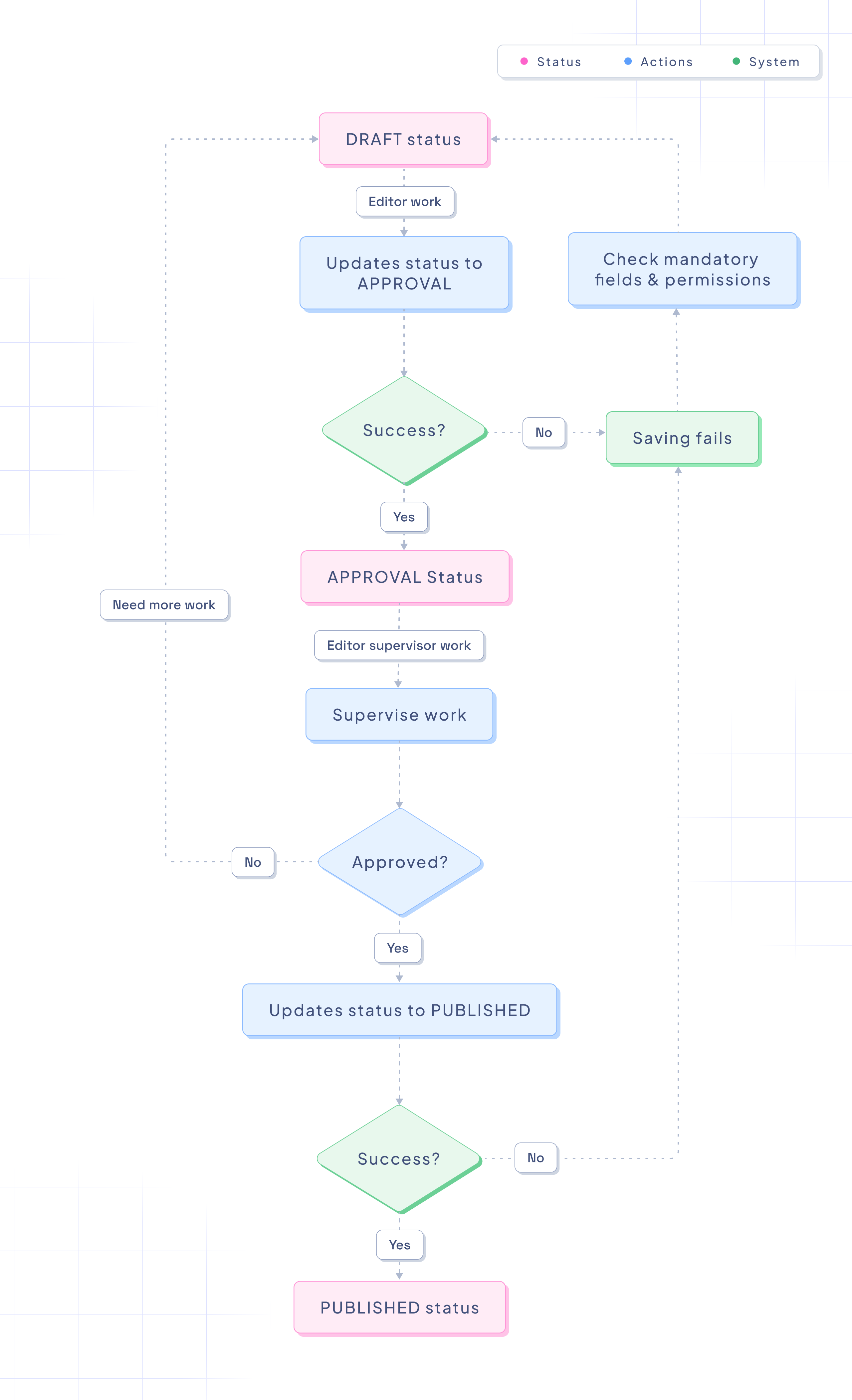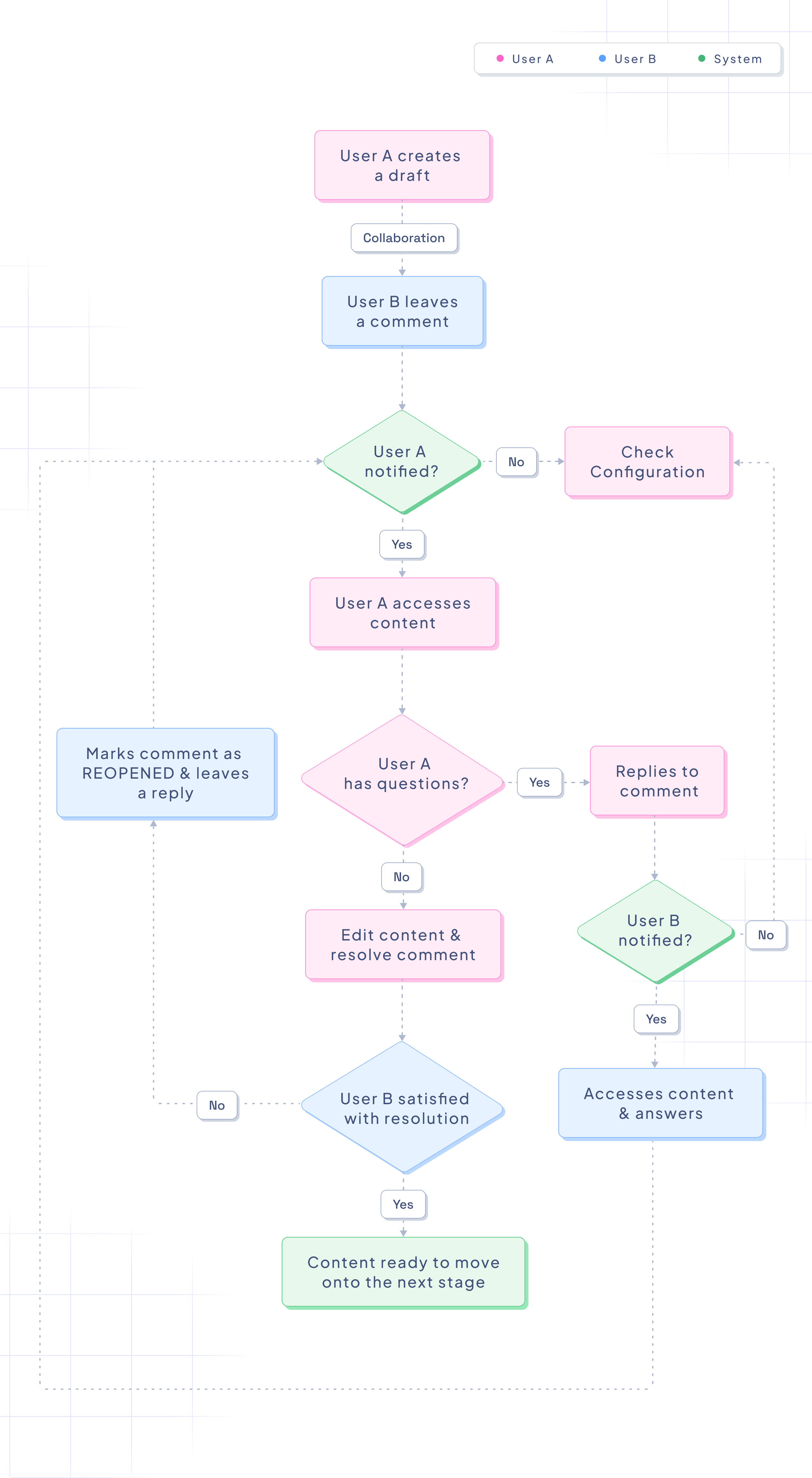Workflows
#Overview
- As an Editor you are not likely to create workflows, but you will be part of one through the role(s) and permissions that you are assigned to in the project.
- If your role is related to Editors supervision, you may need to use this.
Creating workflows is essential to managing larger teams and ensuring that errors do not slip through the cracks when teams create and update content using a CMS. Hygraph is no different.
One of the simplest ways to create secure workflows is by using Custom Roles. Custom roles allow teams to give specific permissions depending on the person's role on the project. This ensures that team members don't get bogged down by functionality that's not relevant to them and that they do not prematurely publish something.
Another way to create workflows is by using the Content Staging and Content Versioning Features.
With Content Staging, it is possible to compare and revert changes between content in Draft and Published stages. This workflow can be further empowered by setting up a Custom View, which allows you to see all content that matches certain criteria in the DRAFT or PUBLISHED stage.
Using these features, it is easy to enable Editors to create straightforward oversight workflows to expedite the content creation process.
#Sample workflows
#Workflow with 3 content stages
The following diagram shows a workflow with 3 content stages: DRAFT, APPROVAL and PUBLISHED.
 Hygraph workflow with 3 content stages
Hygraph workflow with 3 content stages
#Workflow with 2 roles
The following diagram shows a simplified workflow including 3 content stages - DRAFT, APPROVAL and PUBLISHED - as well as two roles: Editor & Editor Supervisor.
 Hygraph workflow with 2 roles
Hygraph workflow with 2 roles
#Commenting & notifications workflow
The following diagram shows a simplified workflow including 2 users collaborating through our commenting feature:
 Hygraph commenting & notifications workflow
Hygraph commenting & notifications workflow